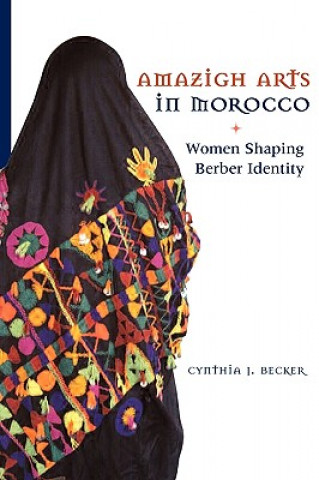
Kód: 04872956
Amazigh Arts in Morocco
Autor Cynthia Becker
In southeastern Morocco, around the oasis of Tafilalet, the Ait Khabbash people weave brightly coloured carpets, embroider indigo head coverings, paint their faces with saffron, and wear ornate jewellery. Their extraordinarily det ... celý popis
- Jazyk:
 Angličtina
Angličtina - Väzba: Brožovaná
- Počet strán: 239
Nakladateľ: University of Texas Press, 2006
- Viac informácií o knihe

Mohlo by sa vám tiež páčiť
-

Memoir of a Berber
15.05 € -12 % -

Berber Identity Movement and the Challenge to North African States
38.31 € -

Berber Culture on the World Stage
32.67 € -
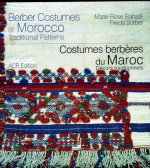
Berber Costumes of Morocco: Traditional Patterns
90.56 € -
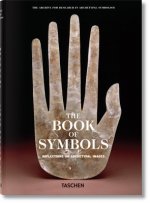
The Book of Symbols
32.26 € -21 % -

File Organization and Processing
198.43 € -

Berbers
62.18 € -

Brazilian Politics - Reforming a Democratic State in a Changing World
74.57 € -

Fugitive Poets
16.69 € -13 % -

Sacred Geometry
11.05 € -28 % -

Key Issues in Education Policy
113.50 € -9 % -

Nimzo-Indian Rubinstein
17.71 € -18 % -

Vietnam War US & Allied Combat Equipments
14.84 € -30 % -

Harry Potter and the Goblet of Fire - Hufflepuff Edition
19.56 € -24 % -

Morocco Traditional Art and Culture
34.21 € -

Moon Knight Epic Collection: Bad Moon Rising
34.31 € -16 % -

Moon Knight: The Complete Collection
27.96 € -23 % -

Among the Berbers of Algeria
42.61 € -

Printing in Plastic
37.38 € -18 % -
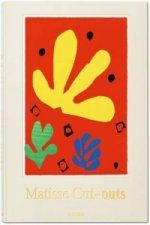
Henri Matisse. Cut-outs. Drawing With Scissors
61.25 € -

Isambard Kingdom Brunel
15.46 € -28 % -

Sleep Sense
14.74 € -

Walt Disney Animation Studios - The Archive Series: Design
82.26 € -

Interconnect Analysis and Synthesis
181.53 € -

Quantum Information, Computation and Communication
78.77 € -

Collected Letters of W. B. Yeats: Volume II: 1896-1900
517.15 € -

Women of the United Arab Emirates
55.41 € -

Queer Transitions in Contemporary Spanish Culture
120.47 € -

'Steps to the Temple', 'Delights of the Muses' and Other Poems
51.01 € -

Foucault on the Politics of Parrhesia
62.38 € -

Castle to Castle
13.21 € -19 % -

Lower Depths
16.89 € -2 % -

Brisingr
6.44 € -20 % -

Rozum i wiara modlitwa godnosc solidarnosc
6.96 € -

Powrot z gwiazd
8.08 € -1 %
Darujte túto knihu ešte dnes
- Objednajte knihu a vyberte Zaslať ako darček.
- Obratom obdržíte darovací poukaz na knihu, ktorý môžete ihneď odovzdať obdarovanému.
- Knihu zašleme na adresu obdarovaného, o nič sa nestaráte.
Viac informácií o knihe Amazigh Arts in Morocco
Nákupom získate 73 bodov
 Anotácia knihy
Anotácia knihy
In southeastern Morocco, around the oasis of Tafilalet, the Ait Khabbash people weave brightly coloured carpets, embroider indigo head coverings, paint their faces with saffron, and wear ornate jewellery. Their extraordinarily detailed arts are rich in cultural symbolism; they are always breathtakingly beautiful - and they are typically made by women. Like other Amazigh (Berber) groups (but in contrast to the Arab societies of North Africa), the Ait Khabbash have entrusted their artistic responsibilities to women. Cynthia Becker spent years in Morocco living among these women and, through family connections and female fellowship, achieved unprecedented access to the artistic rituals of the Ait Khabbash. The result is more than a stunning examination of the arts themselves, it is also an illumination of women's roles in Islamic North Africa and the many ways in which women negotiate complex social and religious issues. One of the reasons Amazigh women are artists is that the arts are expressions of ethnic identity, and it follows that the guardians of Amazigh identity ought to be those who literally ensure its continuation from generation to generation, the Amazigh women. Not surprisingly, the arts are visual expressions of womanhood, and fertility symbols are prevalent. Controlling the visual symbols of Amazigh identity has given these women power and prestige. Their clothing, tattoos, and jewellery are public identity statements; such public artistic expressions contrast with the stereotype that women in the Islamic world are secluded and veiled. But their role as public identity symbols can also be restrictive, and history (French colonialism, the subsequent rise of an Arab-dominated government in Morocco, and the recent emergence of a transnational Berber movement) has forced Ait Khabbash women to adapt their arts as their people adapt to the contemporary world. By framing Amazigh arts with historical and cultural context, Cynthia Becker allows the reader to see the full measure of these fascinating artworks.
 Parametre knihy
Parametre knihy
Zaradenie knihy Knihy po anglicky Humanities History Regional & national history
29.60 €
- Celý názov: Amazigh Arts in Morocco
- Podnázov: Women Shaping Berber Identity
- Autor: Cynthia Becker
- Jazyk:
 Angličtina
Angličtina - Väzba: Brožovaná
- Počet strán: 239
- EAN: 9780292721371
- ISBN: 0292721374
- ID: 04872956
- Nakladateľ: University of Texas Press
- Hmotnosť: 376 g
- Rozmery: 228 × 153 × 16 mm
- Dátum vydania: 01. July 2006
Obľúbené z iného súdka
-
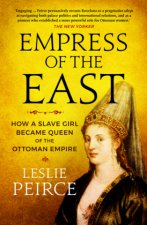
Empress of the East
13.51 € -28 % -

Rise And Fall Of The Third Reich
22.02 € -23 % -

History of Nepal
29.39 € -18 % -

Beyond Band of Brothers
15.46 € -28 % -

Secret History
12.08 € -31 % -

Conquest of New Spain
13.41 € -31 % -

Families Who Made Rome
17.51 € -28 % -

Angela's Ashes
11.46 € -28 % -

Seven Military Classics Of Ancient China
20.58 € -22 % -

Butchering Art
12.08 € -16 % -

Washington
19.46 € -20 % -

Great Game
15.46 € -28 % -

Stayin' Alive
21.09 € -17 % -

Sherman Firefly vs Tiger
16.48 € -28 % -

Witnesses to a World Crisis
109.51 € -

Great Britain's Great War
13.10 € -18 % -

Quest for Decisive Victory
38.51 € -

Kublai Khan
14.74 € -15 % -

Anti-Intellectualism in American Life
17 € -20 % -

Traveller's History of Southeast Asia
13 € -21 % -

Selected Writings 1920-1969
32.26 € -

Hundred Years' War on Palestine
12.08 € -24 % -

Ten Myths About Israel
12.49 € -16 % -

Ethnic Cleansing of Palestine
12.90 € -26 % -

Decline and Fall of the Roman Empire
5.93 € -21 % -

The Balkans, 1804-2012
20.58 € -28 % -

Strange Death of Europe
16.59 € -23 % -

Diana: Her True Story - In Her Own Words
11.05 € -26 % -

The Secret Diaries Of Miss Anne Lister: Vol. 1
13.62 € -14 % -

Giza Power Plant
16.07 € -16 % -

Medieval Monsters
10.44 € -28 % -

Citizens
20.58 € -28 % -

Dictatorland
13.82 € -7 % -

Millennium
13.21 € -24 % -

Memoirs from the House of the Dead
10.54 € -

Maurice's Strategikon
29.39 € -5 % -
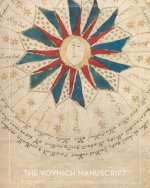
Voynich Manuscript
39.54 € -1 % -

Last Voyage of the Lusitania
17.71 € -12 % -
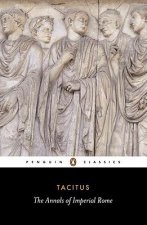
Annals of Imperial Rome
13.51 € -28 % -

Anatomy of the Nuremberg Trials
14.84 € -19 % -

Barber of Damascus
38.41 € -

Strike and Hold
25.29 € -19 % -

Moshe Dayan
27.34 € -9 % -

Palestine
20.27 € -21 % -

The Fourth Turning
20.68 € -1 % -

Londoners
11.16 € -25 % -

How to be a Victorian
13.51 € -28 % -

Line in the Sand
11.77 € -6 % -

History of Japan
16.18 € -20 %
Osobný odber Bratislava a 2642 dalších
Copyright ©2008-24 najlacnejsie-knihy.sk Všetky práva vyhradenéSúkromieCookies



 21 miliónov titulov
21 miliónov titulov Vrátenie do mesiaca
Vrátenie do mesiaca 02/210 210 99 (8-15.30h)
02/210 210 99 (8-15.30h)